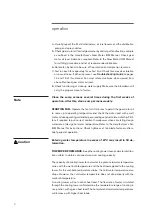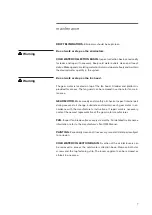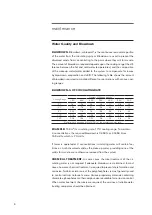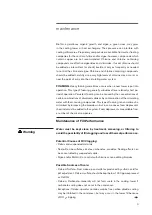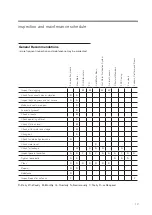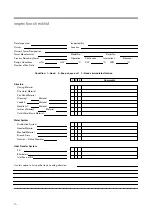
5
HOT WATER DISTRIBUTION SYSTEM–Maintain uniform water distribution
at the nozzles (uniform spray cone). The amount of water circulated should
approximate the contract requirements and the nozzle pressure should be kept
constant. Lower pressures may indicate excessive losses in the piping system
and/or insufficient pump capacity; greater pressures might indicate clogged
nozzles and/or overpumping. If a greatly reduced water flow rate is desired, it
may be advisable to change nozzle sizes to obtain the desired pressure and
maintain proper water distribution. An SPX Cooling Technologies engineer
can advise minimum and maximum flow rates for even distribution.
COLD WATER COLLECTION BASIN–A suitable depth must be maintained
to keep the pumps from pulling air into the line. The amount of “make-up”
water required to keep the water in the collection basin at the required depth
depends upon the “evaporation loss” and “blowdown” .
FREEZING WEATHER OPERATION–During periods of low temperature
operation, 2°C to 5°C or below, ice will form on the relatively dry parts of the
cooling tower that are in contact with the incoming air. Primarily, this includes
the air inlet and adjacent structural framing. Your understanding of cold weather
operation will be enhanced if you read “Cooling Towers and Freezing
Weather”
Technical Report H-003
available at spxcooling.com.
Ice forming characteristics on any given cooling tower will vary, depending on
velocity and direction of wind, circulating water rate, and heat load. Excessive
ice formation may be controlled by regulating air and water flow through the
tower by one or more of the following procedures:
1–Shut the fan down. This reduces the cooling air rate to a minimum and in-
creases the quantity of warm water at the air inlet to a maximum. However,
normal “fan off” operation causes reverse air flow by aspiration and may
cause water blowout and therefore must be done with caution and moni-
toring. For automatic operation, a timer switch can be provided to shut the
fan down for a few minutes each hour.
2–If the cooling tower has VFD, operate the fans at half speed forward. This
reduces the cooling air rate (heat transfer) and increases the quantity of
warm water at the air inlet.
3–With no heat load on the circulating water, icing cannot be controlled. Towers
must not
be operated with reduced water rate and/or no heat load during
freezing weather. If a bypass directly into the cold water basin is used, all
water must be bypassed.
operation




